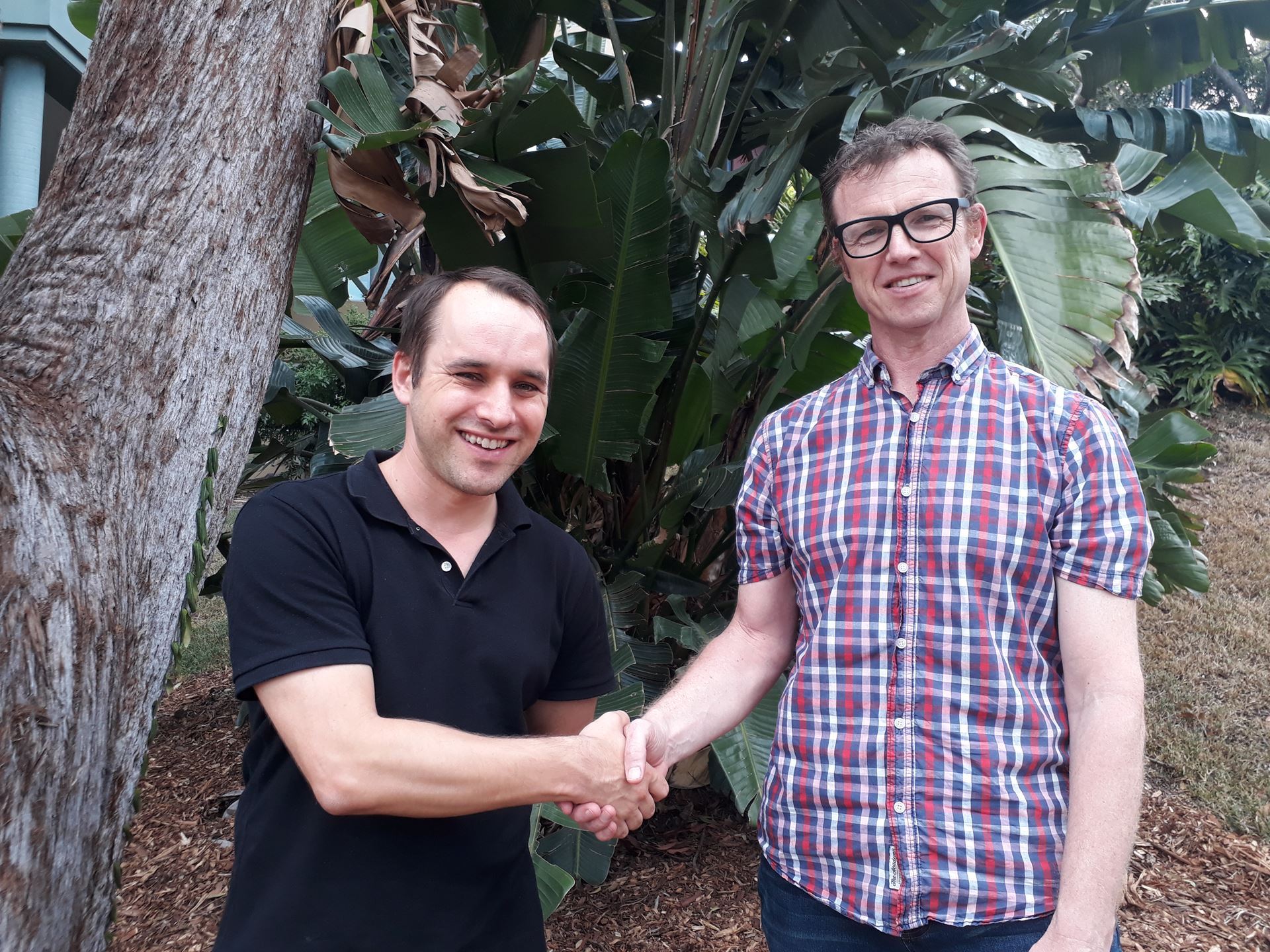
Dr Michael Waller, BCA Program Coordinator at the University of Queensland, accepts the Award on behalf of member universities, from Prof Adrian Barnett
The Statistical Society of Australia has awarded the 2019 President’s Award for Leadership in Statistics to the Biostatistics Collaboration of Australia (BCA).
This award is for the BCA’s outstanding contribution to statistics based on their sustained work since 2001 to provide Australia with much needed skills in biostatistics, which includes research in genetics, clinical trials and public health.
The BCA has a great national reputation and its students are highly prized for jobs in health and medical research, an area that has a growing need for statistical skills because of the increasing size and complexity of data.
The President of the Statistical Society of Australia, Professor Adrian Barnett, said, “The BCA has been of enormous national value for the field of statistics. It has brought together some of our most experienced statisticians to pass on their skills to students. I know that other fields have aimed to copy the BCA’s collaborative model, which is the ultimate form of flattery.”
The BCA is a consortium of biostatistical experts from across Australia with representatives from universities, government and clinical practice who have combined to offer a national (and international) program of postgraduate courses via an alliance of six universities, being The University of Adelaide, Macquarie University, Monash University, The University of Queensland, The University of Sydney and the University of Melbourne (affiliate member).
It was established because of the national shortage of statisticians with expertise in the health industry and medical research, and has served to raise the standard of scientific rigour in health and medical research.
The BCA has graduated 552 students since 2001 and at the start of semester one, 2019, there were 387 students enrolled in the BCA program.
“The BCA has filled an important gap in our national skill set, and at the 2018 national Statistical Society conference there was a strong consensus that Australia needs more investment in biostatistics to meet the growing demand.” Professor Barnett said.
